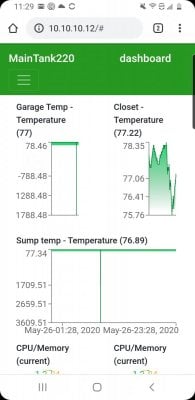- Joined
- Aug 11, 2018
- Messages
- 677
- Reaction score
- 1,123
I don't know how much current the Eheim requires, but I would guess it's more than a few milliamps since it has a motor. The 3.3v pin is basically the same as pin 1 or pin 17 on the rpi. It comes from the 3.3v regulator on the rpi.Thanks, I followed what @AbjectMaelstroM suggested and it worked. I now have an EHEIM feeder hooked up, (kudos @robsworld78 for details on how to hookup the EHEIM). Created a timer that kicks off a macro that turns off wave makers and pumps, waits, activates the feeder, waits for 3-4 minutes then turns everything back on again. Pretty slick!
Well, looks good on the test bench.... Hoping to get things hooked up to my 65 FOWLR soon.
I'm powering the EHEIM from one of the 3.3v pins designated for a temp probe on the ML Goby Hat. Wondering if it may draw too much current from the Hat... Seems to work just fine but like I said, it's on the test bench and not in production.... @Michael Lane Thoughts?
You may not experience any issues, but it could possibly result in brownouts and resets on the rpi.



























